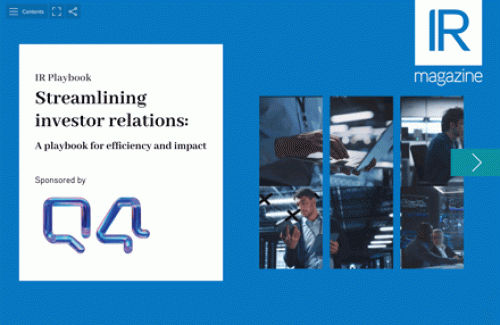As the IR community explores the ways in which artificial intelligence (AI) can bring change to the role – at present typically in streamlining time-intensive tasks – James Tickner, global head of product for IR Intelligence at Nasdaq, shares what he’s seen over the recent earnings season, the challenges IROs face and the ways in which these tools can boost IR understanding and engagement with both the buy side and the sell side.
In what ways have you seen companies apply AI during this earnings season?
We have seen companies measuring the sentiment of competitors that have reported earlier in the cycle and pre-screening their prepared remarks to benchmark against themselves historically as well as competitors that have already reported. We have seen AI being used to analyze which topics tone was particularly positive or neutral on. Drafting scripts for CEO/CFO prepared remarks, earnings releases and supporting materials is another use-case.
AI tools are useful in providing a summary. We have seen companies summarize comments related to forward outlook for 2024 and summarize the analyst questions most commonly asked across competitors to prepare for their own Q&A.
Are there any surprises here?
It’s not that surprising but the adoption of generative technologies is still relatively slow – in the recent Nasdaq IR Pulse survey, just 8 percent of respondents said they are using generative AI in their workflow today, but two thirds mentioned they are interested in understanding its potential to help them in the future.
What do these tools offer when it comes to company engagement with the buy side and sell side?
On the buy side, generative tools can help in preparing draft responses to investor questions where those require analysis of high volumes of unstructured data. This can help IR teams turn around responses faster and save themselves time. On the sell side, tools to summarize research or questions across a large peer set or sector can help IR teams better understand the most important topics for their covering analysts.
Finally, what are the key concerns companies have in applying AI around earnings and what advice can you offer around those issues?
Explaining the data – for example, whether IROs feel comfortable explaining the methodology behind a sentiment model to their executive team is one challenge. For generative technologies, it is the fear of hallucination, factual inaccuracy, data security or just the sense that the level of checking and editing they would have to do means in the end not much time is saved.
My advice would be to look for tools that are purpose built for professional use-cases with all appropriate data security guard rails in place, where factual information is sourced clearly, where none of your data is used for training the models and where there is clear ownership over the generated content.
For generative tools you should always consider it as a ‘first draft ’and do your own validation and editing before using it in practice.










